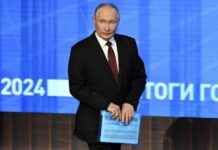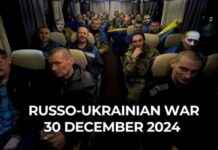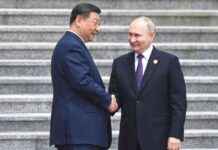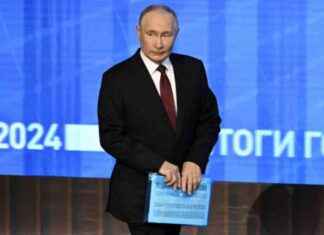Russian Military Recruitment Surpasses Targets Amid Financial Incentives
In a recent report by the Institute for the Study of War (ISW), Ukrainian intelligence estimates that there are approximately 620,000 Russian troops deployed in Ukraine and the Kursk Oblast region. This significant presence comes as Moscow exceeds its recruitment goals by offering unsustainable incentives and even turning to prison enlistment to bolster its military forces. The consequences of this recruitment surge could have far-reaching effects on Russia’s economy, potentially forcing President Putin into negotiations by 2025.
The ongoing military buildup in Russia, as highlighted by ISW, suggests that peace may not be a priority for Moscow at the moment. This sentiment is reinforced by a recent poll showing that 46% of the Russian public opposes any troop withdrawal. The situation is further complicated by the fact that approximately 200,000 Russian troops are actively engaged in frontline combat, with an additional 35,000 Rosgvardia troops positioned in rear areas to serve as a secondary defense force, according to Major General Vadym Skibitskyi.
Skibitskyi also revealed that Russian recruitment efforts have been remarkably successful, with 440,000 military personnel enlisted in 2024, exceeding the annual quota by 10,000. Financial incentives have played a pivotal role in this recruitment drive, with President Putin authorizing a 400,000-ruble bonus for recruits who signed contracts between August and December 2024. While these incentives have been effective, there are concerns about their sustainability, as some regional governments are already reducing supplementary bonuses.
Russian Military Recruitment Strategies
One concerning trend in Russia’s recruitment strategy is the increasing reliance on prison enlistment. Skibitskyi disclosed that in 2024, 15% of new recruits had a criminal background, and this number is expected to rise to 30% in 2025. In response to the shrinking pool of available prison recruits, Russia has begun recruiting from pretrial detention centers, indicating a shift in the country’s military recruitment landscape.
Moreover, sustaining the current rate of enlistment poses challenges for Russia’s economy. Despite exceeding recruitment quotas, the financial strain is evident. The ISW highlights that increased military spending, including substantial payments and benefits to servicemembers, is negatively impacting the Russian economy. To mitigate these effects, the Kremlin has started to reduce military spending on personnel, raising questions about the long-term sustainability of the recruitment surge.
Impact on Russia’s Economy and Military
As Russia adjusts its recruitment targets to compensate for battlefield losses, the country is facing a delicate balancing act between replacing losses and engaging in offensive operations. Skibitskyi indicated that while Russia’s 2025 recruitment plans could account for battlefield losses, they may not support a significant increase in offensive maneuvers. This delicate balance could have broader implications on Russia’s military strategy and overall stability.
Moving forward, Western military aid could play a crucial role in shaping the dynamics of the conflict. By providing support to Ukrainian forces, Western nations could potentially intensify Russian military and economic challenges, prompting Putin to engage in meaningful negotiations in 2025. This shift in the geopolitical landscape could pave the way for diplomatic breakthroughs and de-escalation in the region.
In a related development, former President Trump’s decision to suspend all military aid to Ukraine adds another layer of complexity to the situation. This move could exert pressure on President Zelenskyy to prioritize peace talks and negotiate with Russia to find a lasting resolution to the conflict.
As the recruitment numbers continue to rise and geopolitical tensions escalate, the future of the conflict between Russia and Ukraine remains uncertain. The impact of these recruitment strategies on Russia’s economy, military capabilities, and diplomatic engagements will undoubtedly shape the trajectory of the region in the coming years.

















